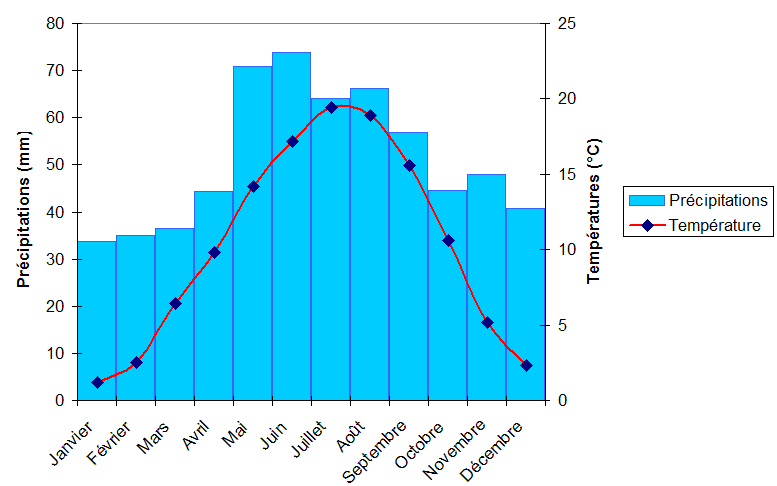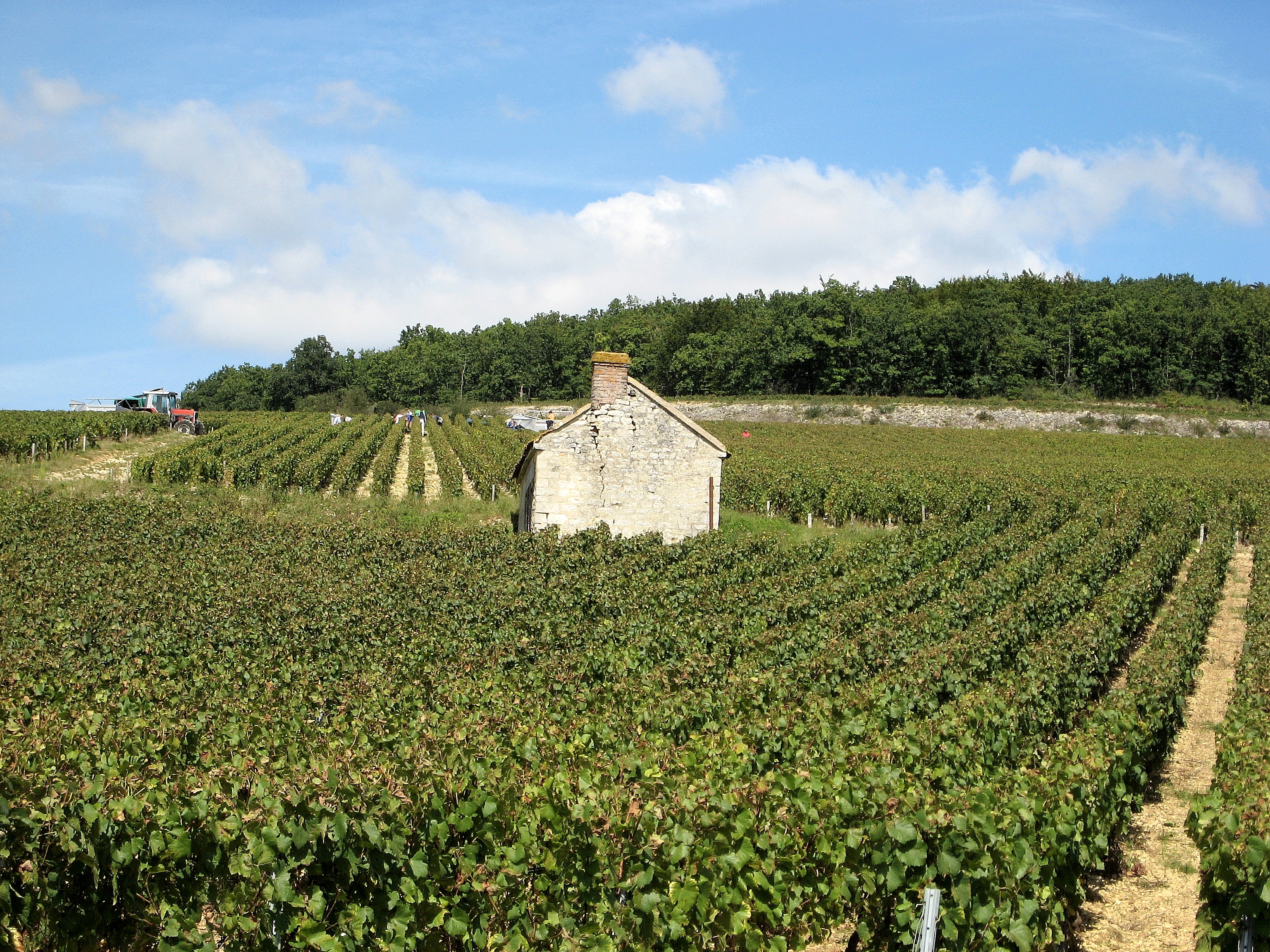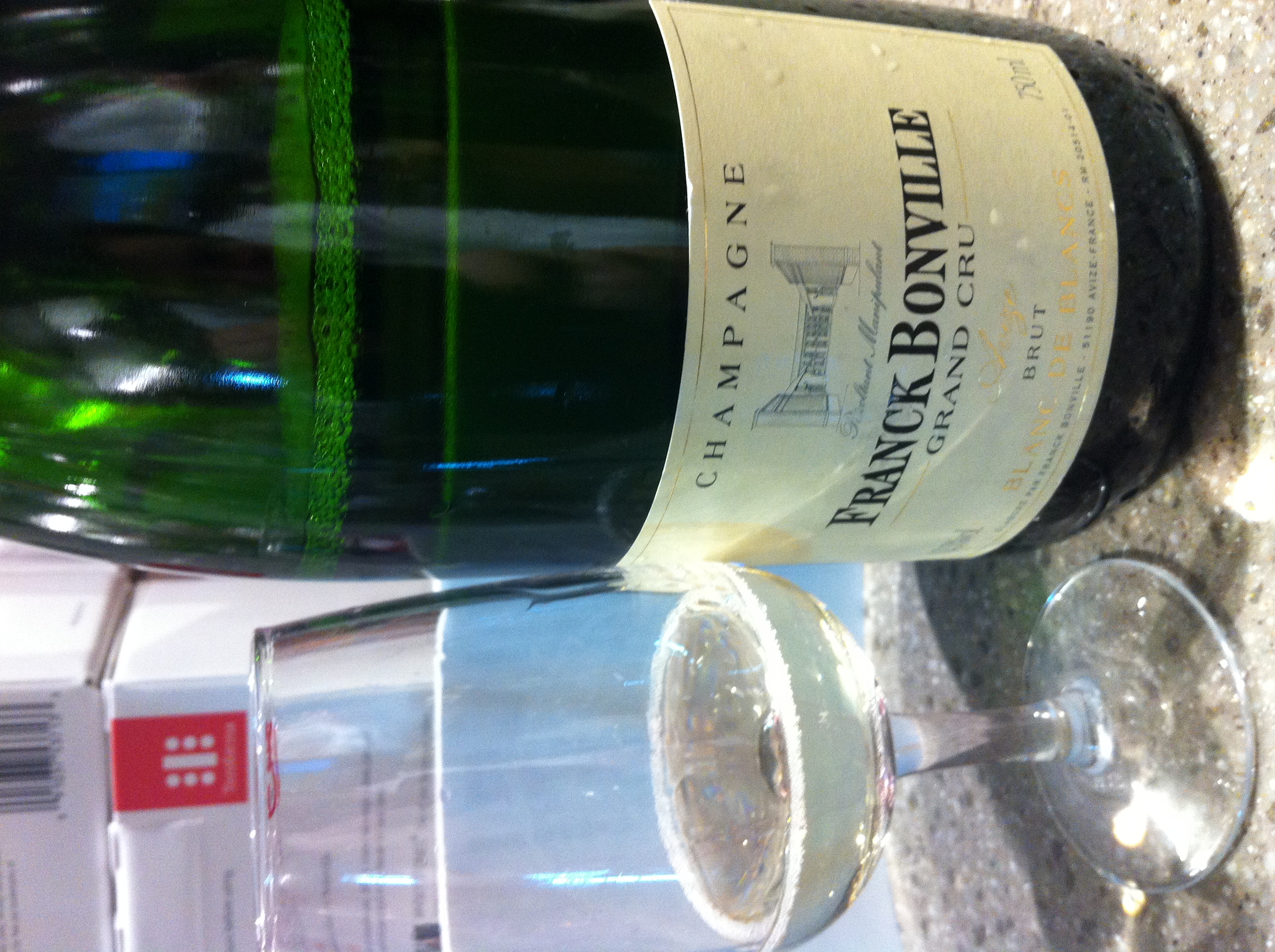|
Lieu-dit
''Lieu-dit'' (; plural: ''lieux-dits'') (literally ''location-said'', "named place") is a French language, French toponymic term for a small geographical area bearing a traditional name. The name usually refers to some characteristic of the place, its former use, a past event, etc. A lieu-dit may be uninhabited, which distinguishes it from an ''hameau'' (Hamlet (place), hamlet), which is inhabited. In Burgundy, the term ''climat'' is used interchangeably with ''lieu-dit''. Etymology English speakers seem to have discovered the concept through oenology and have considered it as a Glossary of wine terms, wine term which in its typical usage translates as "vineyard name" or "named vineyard". Typically, a ''lieu-dit'' is the smallest piece of land which has a traditional vineyard name assigned to it. In most cases, this means that a ''lieu-dit'' is smaller than an ''appellation d'origine contrôlée'' (AOC). Use in France In some cases, ''lieux-dits'' appear on wine labels, in addi ... [...More Info...] [...Related Items...] OR: [Wikipedia] [Google] [Baidu] |
Alsace Grand Cru AOC
Alsace Grand Cru () is an Appellation d'Origine Contrôlée for wines made in specific parcels of the Alsace wine region of France. The Grand Cru AOC was recognized in 1975 by the Institut National des Appellations d'Origine, INAO with subsequent expansion in 1983, 1992 and 2007.INAO: AOC Alsace Grand Cru regulations, updated until September 28, 2007 , retrieved 2011-04-22. The wines come from selected sites in the Alsace AOC region,INAO: AOC Alsace regulations, updated until January 14, 2007 , ret ... [...More Info...] [...Related Items...] OR: [Wikipedia] [Google] [Baidu] |
Alsace AOC
Alsace wine or Alsatian wine (; ; ; ) is produced in the Alsace region in France and is primarily white wine. Because of its Germanic influence, it is the only ''Appellation d'Origine Contrôlée'' region in France to produce mostly varietal wines, typically from similar grape varieties to those used in German wine. Along with Austria and Germany, it produces some of the most noted dry Rieslings in the world as well as highly aromatic Gewürztraminer wines. Wines are produced under three different AOCs: Alsace AOC for white, rosé and red wines, Alsace Grand Cru AOC for white wines from certain classified vineyards and Crémant d'Alsace AOC for sparkling wines. Both dry and sweet white wines are produced. In 2006, vines were grown on 15,298 hectares (37,800 acres) in 119 villages in Alsace, and 111.3 million litres of wine was produced, corresponding to 148.4 million bottles of 750 mL, generating 478.8 million euro in revenue. Of the vineyard surface, 78% was classified for th ... [...More Info...] [...Related Items...] OR: [Wikipedia] [Google] [Baidu] |
Alsace Wine
Alsace wine or Alsatian wine (; ; ; ) is produced in the Alsace region in France and is primarily white wine. Because of its History of Alsace, Germanic influence, it is the only ''Appellation d'Origine Contrôlée'' region in France to produce mostly varietal wines, typically from similar grape varieties to those used in German wine. Along with Austrian wine, Austria and Germany, it produces some of the most noted dry Rieslings in the world as well as highly aromatic Gewürztraminer wines. Wines are produced under three different AOCs: Alsace AOC for white, rosé and red wines, Alsace Grand Cru AOC for white wines from certain classified vineyards and Crémant d'Alsace AOC for sparkling wines. Both dry and sweet white wines are produced. In 2006, vines were grown on 15,298 hectares (37,800 acres) in 119 villages in Alsace, and 111.3 million litres of wine was produced, corresponding to 148.4 million bottles of 750 mL, generating 478.8 million euro in revenue. Of the vineyard sur ... [...More Info...] [...Related Items...] OR: [Wikipedia] [Google] [Baidu] |
Burgundy Wine
Burgundy wine ( or ') is made in the Burgundy region of eastern France, in the valleys and slopes west of the Saône, a tributary of the Rhône. The most famous wines produced here, and those commonly referred to as "Burgundies", are dry (wine), dry red wines made from pinot noir grapes and white wines made from chardonnay grapes. Red and white wines are also made from other grape varieties, such as gamay and aligoté, respectively. Small amounts of rosé and sparkling wines are also produced in the region. Chardonnay-dominated Chablis (wine), Chablis and gamay-dominated Beaujolais wine, Beaujolais are recognised as part of the Burgundy wine region, but wines from those subregions are usually referred to by their own names rather than as "Burgundy wines". Burgundy has a higher number of ' (AOCs) than any other French region, and is often seen as the most '-conscious of the French wine regions. The various Burgundy AOCs are classification of wine, classified from carefully deline ... [...More Info...] [...Related Items...] OR: [Wikipedia] [Google] [Baidu] |
French Wine
French wine is produced throughout all of France in quantities between 50 and 60 million hectolitres per year, or 7–8 billion bottles. France is one of the largest wine producers in the world. French wine traces its history to the 6th century BCE, with many of France's regions dating their wine-making history to Roman times. The wines produced range from expensive wines sold internationally to modest wines usually only seen within France such as the Margnat wines of the post-war period. Two concepts central to the better French wines are the notion of ''terroir'', which links the style of the wines to the locations where the grapes are grown and the wine is made, and the Protected designation of origin (''Appellation d'Origine Protégée'', AOP) system, named ''Appellation d'origine contrôlée'' (AOC) until 2012. Appellation rules closely define which grape varieties and winemaking practices are approved for classification in each of France's several hundred ge ... [...More Info...] [...Related Items...] OR: [Wikipedia] [Google] [Baidu] |
Wine Terminology
The glossary of wine terms lists the definitions of many general terms used within the wine industry. For terms specific to viticulture, winemaking, grape varieties, and wine tasting, see the topic specific list in the "''See also''" section below. A ;Abboccato : An Italian term for full-bodied wines with medium-level sweetness ;ABC : Initials for "Anything but Chardonnay" or "Anything but Cabernet". A term conceived by Bonny Doon's Randall Grahm to denote wine drinkers' interest in grape varieties. ;Abfüllung (Erzeugerabfüllung) : Bottled by the proprietor. Will be on the label followed by relevant information concerning the bottler. ; ABV : Abbreviation of alcohol by volume, generally listed on a wine label. ;AC : Abbreviation for "Agricultural Cooperative" on Greek wine labels and for ''Adega Cooperativa'' on Portuguese labels. ;Acescence : Wine with a sharp, sweet-and-sour tang. The acescence characteristics frequently recalls a vinegary smell. ;Adamado : Portuguese t ... [...More Info...] [...Related Items...] OR: [Wikipedia] [Google] [Baidu] |
Types Of Administrative Division
Type may refer to: Science and technology Computing * Typing, producing text via a keyboard, typewriter, etc. * Data type, collection of values used for computations. * File type * TYPE (DOS command), a command to display contents of a file. * Type (Unix), a command in POSIX shells that gives information about commands. * Type safety, the extent to which a programming language discourages or prevents type errors. * Type system, defines a programming language's response to data types. Mathematics * Type (model theory) * Type theory, basis for the study of type systems * Arity or type, the number of operands a function takes * Type, any proposition or set in the intuitionistic type theory * Type, of an entire function ** Exponential type Biology * Type (biology), which fixes a scientific name to a taxon * Dog type, categorization by use or function of domestic dogs Lettering * Type is a design concept for lettering used in typography which helped bring about modern textual ... [...More Info...] [...Related Items...] OR: [Wikipedia] [Google] [Baidu] |
Vineyard Designated Wine
A vineyard designated wine is a wine produced from the product of a single vineyard with that vineyard's name appearing on the wine label. Throughout the history of winemaking and viticulture, the differences in quality between one plot of land and another have been observed with the boundaries of these vineyard generally well demarcated. In Burgundy, the vineyards of the area are classified with the highest quality vineyards receiving the ranking of Grand cru. The names of these vineyards, such as Montrachet, will often appear on the wine label of Burgundy wines in bolder, more prominent print than even the name of the producer.K. MacNeil ''The Wine Bible'' pg 194-196 Workman Publishing 2001 In the United States, the appearance of vineyards name on wine labels is a relatively recent phenomenon with one of the first vineyard designated premium wines in California being the 1966 vintage Heitz Martha's Vineyard Cabernet Sauvignon. Later examples include the 1975 Robert Young V ... [...More Info...] [...Related Items...] OR: [Wikipedia] [Google] [Baidu] |
United States (wine)
Wine has been produced in the United States since the 1500s, with the first widespread production beginning in New Mexico in 1628. As of 2023, wine production is undertaken in all fifty states, with California producing 80.8% of all US wine. The North American continent is home to several native species of grape, including ''Vitis labrusca'', '' Vitis riparia'', ''Vitis rotundifolia'', and '' Vitis vulpina,'' but the wine-making industry is based almost entirely on the cultivation of the European ''Vitis vinifera'', which was introduced by European settlers.H. Johnson & J. Robinson. ''The World Atlas of Wine'', p. 268, Mitchell Beazley Publishing 2005 . With more than under vine, the United States is the fourth-largest wine producing country in the world, after Italy, Spain, and France.T. Stevenson, ''The Sotheby's Wine Encyclopedia'' Fourth Edition, p. 462, Dorling Kindersly, 2005 .J. Robinson, ed. ''The Oxford Companion to Wine'', Third Edition, p. 719; Oxford University Press, ... [...More Info...] [...Related Items...] OR: [Wikipedia] [Google] [Baidu] |
Rhône Wine
The Rhône wine region in Southern France is situated in the Rhône valley and produces numerous wines under various ''Appellation d'origine contrôlée'' (AOC) designations. The region's major appellation in production volume is Côtes du Rhône AOC. The Rhône is generally divided into two sub-regions with distinct vinicultural traditions, the Northern Rhône (referred to in French as ''Rhône septentrional'') and the Southern Rhône (in French ''Rhône méridional''). The northern sub-region produces red wines from the Syrah grape, sometimes blended with up to 20% of white wine grapes, and white wines from Marsanne, Roussanne and Viognier grapes. The southern sub-region produces an array of red, white and rosé wines, often blends of several grapes such as in Châteauneuf-du-Pape. History The first cultivated vines in the region were probably planted around 600 BC. The origins of the two most important grape varieties in the northern Rhone (Syrah and Viognier) have in the ... [...More Info...] [...Related Items...] OR: [Wikipedia] [Google] [Baidu] |
Premier Cru
Cru is a wine Glossary of wine terms, term used to indicate a high-quality vineyard or group of vineyards. It is a French language, French word which was originally used to refer to both a region and anything grown in it, but is now mostly used to refer to both a vineyard and its wines. The term is often used within classification of wine, classifications of French wine. By implication, a wine that displays (or is allowed to display) the name of its ''cru'' on its wine label is supposed to exhibit the typical characteristics of this vineyard or group of vineyards. The terms ''premier cru'' and ''grand cru'' designate levels of presumed quality that are variously defined in different wine regions. ''Premier cru'' ''Premier cru'' is a French language wine term corresponding to "first growth" and which can be used to refer to classified vineyards, winery, wineries and wines, with different meanings in different wine regions:J. Robinson (ed.). ''The Oxford Companion to Wine'', Third E ... [...More Info...] [...Related Items...] OR: [Wikipedia] [Google] [Baidu] |





